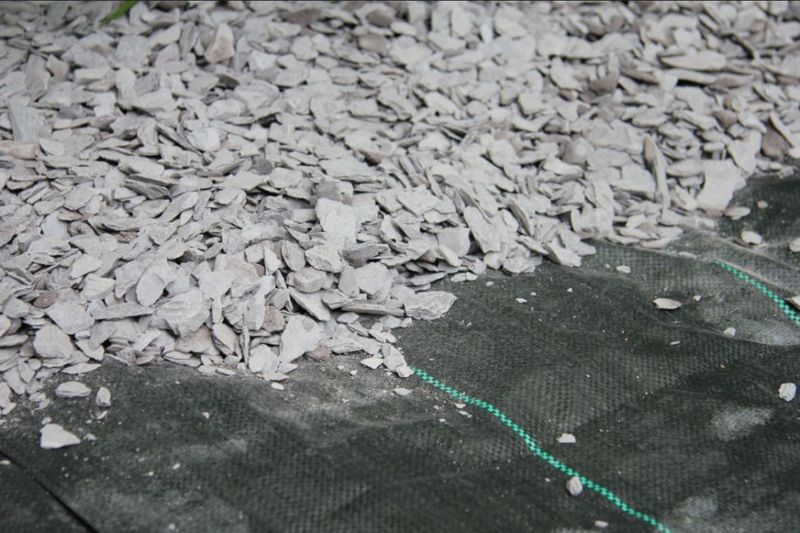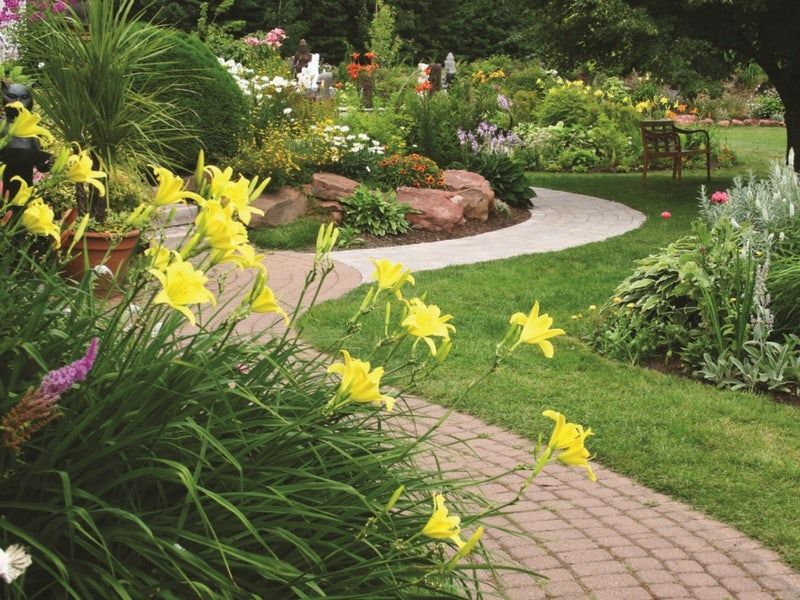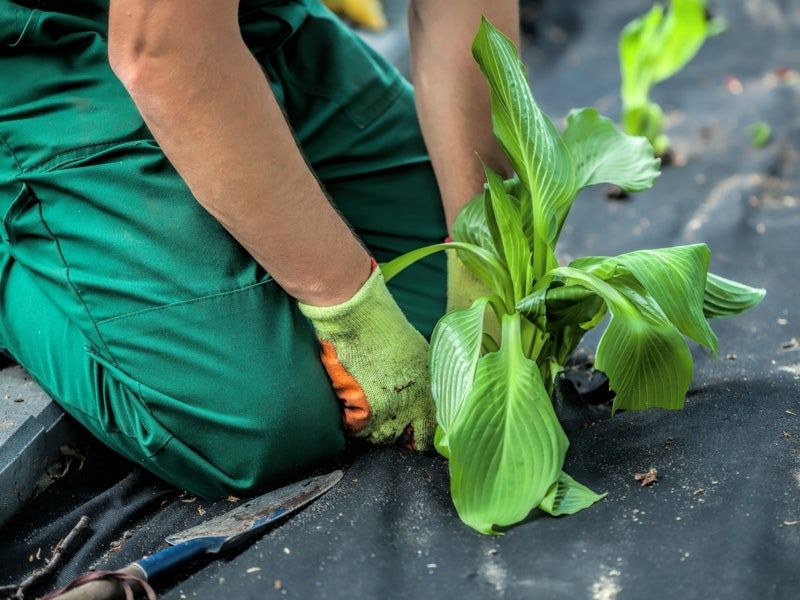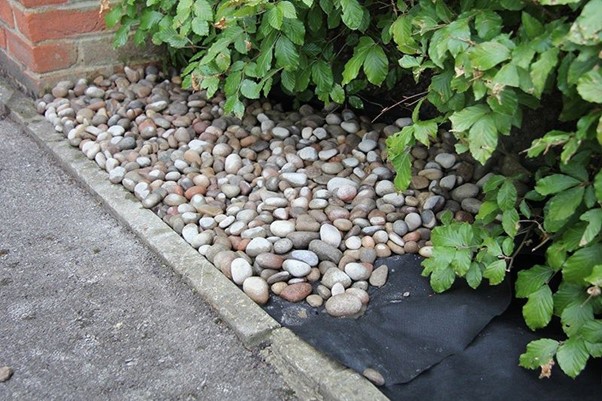Fabric for landscapes is also called weed control fabric or membrane. It is available in many shapes and sizes from numerous brands. If you haven’t read our Landscaping buyer’s guide yet, you should head over to find out why it is absolutely worth its use in the garden. If you have, you’ll already know that despite being commonly used for weed control it has many other benefits, including soil moisture retention, minimising the need for herbicides and area strengthening.
However, a question that often plays on the minds of gardeners is ‘Where can you install landscape fabric?’ Well, there are two main options. Read on the find out more.
Table of contents
- Can landscaping fabric be used under gravel?
- Are landscaping fabrics suitable under the grass?
- How to install landscaping fabric
- What types of landscape and weed control fabrics are there?
Can landscaping fabric be used under gravel?
Absolutely! In fact, landscape fabric can be particularly useful for decorative gravel or bark areas. Areas laid with gravel alone can be disrupted by invasive weed growth. So, installing a landscape fabric before you lay the gravel can help counteract this, providing a long-lasting solution to ensure the area is stable.

Are landscaping fabrics suitable under the grass?
Yep! This is a popular location to install landscaping fabric. Why should weeds get to camouflage themselves as beautiful blades of grass or plants when you can have a charming field of green serving as the best spot for a back garden picnic or planting experience?
Now, keeping this in mind, there are disadvantages to using landscaping fabric under grass. So, avoid using it if you don’t want any of the following problems to occur:
Soil can compact over time
This can cause drainage issues and, as such, will require a suitable filtration system or material to deal with the problem.
Earthworms can become trapped
An earthworm needs to reach the surface for its survival. Using a landscaping fabric can prevent this.
Wanted plants may not survive
If you have naturally spreading plants in the area, use the fabric to prevent their growth because the seeds won’t have the space to move beneath the fabric and develop.
Maintenance can be troublesome
If you ever have to remove or replace the landscaping fabric, it can be laborious; especially if you need a full adjustment.
Some weeds may still make it
Stubborn weeds can still find their way on top of the fabric. To deal with them, simply pull them out or treat them with weed killer.
Lower-quality fabrics are more susceptible to damage
If you have a low-quality fabric, rips and tears are more likely to appear in the material. So, a tougher material will need to be obtained to prevent this.
Enrichment products cannot reach the soil
Things like mulches and soil amendments won’t be able to contact the soil. So, treat it beforehand unless you are satisfied with dealing with the removal and replacement of the fabric in future.
Will landscaping fabric kill grass?
Whether you’re looking for a positive or negative response, the answer remains the same – yes. Landscaping fabric will kill grass when correctly installed.
So, if you plan to remove the grass entirely, this is a way to do so. You may also want to apply more than one layer of landscaping fabric. That way, less water, sunlight and oxygen can find their way to the roots.
Tip: Mow the lawn before you lay down to help prevent the old grass from growing again.
If you’re someone who doesn’t want your grass to suffer, opt for something suitable for lawns. Weed control fabrics have many different performance qualities, so you must read the label to ensure it’s suitable for how you intend to use it.
We have a variety of different landscaping fabrics at Landscaping Superstore. Have a look around to find something that is suited to your needs.

How to install landscaping fabric
Our buyer’s guide dives deeper into the specific fabric installation process. With that said, here is a brief explanation of general landscape fabric applications. Luckily, it’s a relatively straightforward process, which we’ll explain here in some simple steps.
Step one: Prepare the area
Remove all existing plants and rocks in the soil to help flatten the area.
Step two: Shape the fabric to fit the area
Using a cutting tool, shape the fabric is shaped and fitted to the area.
Note: If you have existing plants in the area, you can cut small openings into the fabrics to fit around the stems.

What types of landscape and weed control fabrics are there?
The short answer to that is many! We offer plenty of landscaping fabrics at Landscaping Superstore. You can check out the wide range available here to choose from and ensure your landscape has ideal fabric quality at a great cost.

You can also visit our landscaping buyer’s guide for information about the different types of landscape fabrics available.

















